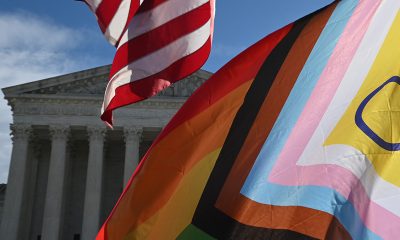Health
Takano ‘aghast’ at proposed UC affiliation with restrictive Catholic hospitals
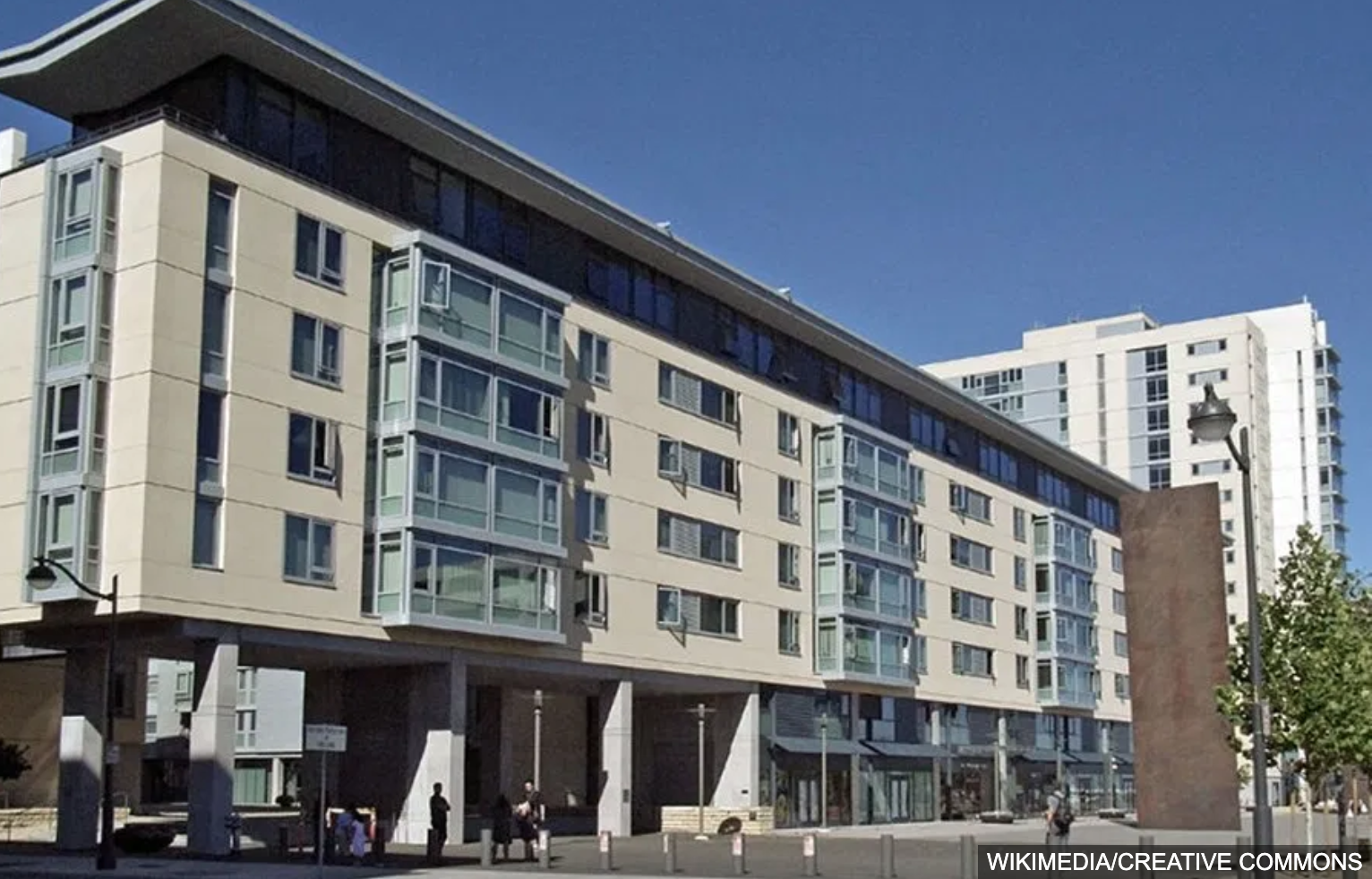
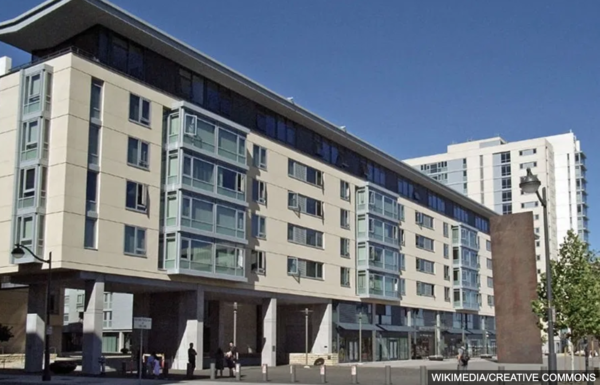
Dignity Health (Wikimedia photo via dailycal.org)
The California congressional delegation is “deeply alarmed” by proposed new healthcare rules governing the affiliation between the University of California and Catholic hospital systems that operate under religious restrictions.
Hospitals such as Dignity Health and St. Joseph Health adhere to the Ethical and Religious Directives (ERDs) set by the U.S. Conference of Catholic Bishops, not by medical professionals, New Ways Ministry reported last June. “Dignity Health operates by the ERDs at 17 out of 31 of their hospitals.”
According to the ACLU, NCLR, and National Health Law, “Contract language explicitly states that students and providers are restricted by Catholic Directives.”
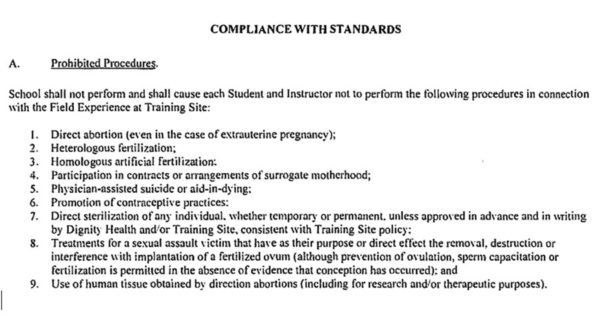
“The ERDs do not allow the prescription of any FDA-approved methods for preventing pregnancy including sterilization, elective abortion; assistive reproductive technology such as in-vitro fertilization (IVF) or the use of a surrogate for pregnancy; gender-affirming care such as hormone replacement therapy or surgery or physician-assisted aid in dying,” The California Aggie reported June 5. “Some argue that partnering with Dignity restrict care to LGBTQ+ people, women, others argue more are harmed by not partnering.”
A previous attempt to expand Dignity Health’s affiliation with UC San Francisco (UCSF) was called off last year after 1,500 UCSF doctors and hospital staff signed a petition opposing the proposed expansion. The UC Working Group on Comprehensive Access (WGCA) was formed to find a way forward but failed to reach a consensus.
In August 2019, the WGCA presented two options: UC Health-backed Option 1 would allow existing affiliations to continue, understanding that some people might be denied care because of the hospital’s adherence to religious doctrine. Option 2 would discourage the continued affiliation.
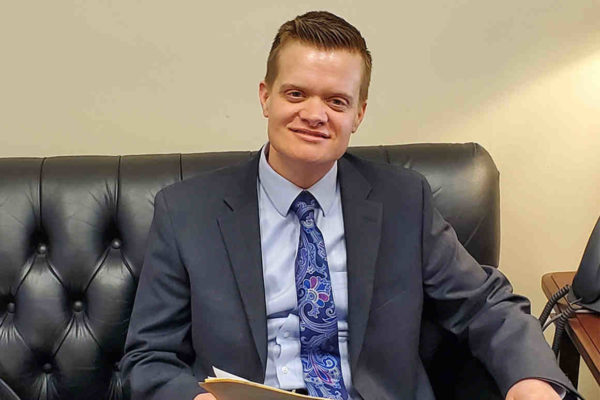
Evan Minton (Photo courtesy ACLU)
Evan Minton, a longtime California politico chair of the California Democratic Party LGBT caucus, was among the LGBTQ advocates who argued against the expanded relationship between UCSF and Dignity. He sued Dignity Health after his hysterectomy was cancelled because they learned he is a transgender man, about which he testified before Congress. The ACLU, which is representing him, argues that hospitals should not be able to “pick and choose” the care they provide to individual patients.
According to the student-run The Daily Californian, Dignity Health spokesperson Dan Loeterman said Dignity Health provides specialized services such as pediatric trauma programs, cancer treatment programs and behavioral health units that would not otherwise be available without the partnerships between UC Health and Dignity Health. “We are deeply committed to providing care to everyone, regardless of who they are,” said Loeterman.
UCSF noted in a statement that about half of the state’s doctors are trained through the UC system and without training at outside entities such as Dignity Health, UC would have to reduce its health-training enrollment, DailyCal.org reported.
Meanwhile, there is some concern the coronavirus pandemic may impact the Regents’ decision. After all, “Catholic health systems control one in six hospital beds and are often the only location for treatment in some rural areas,” New Ways Ministry reported last June 17.
The California congressional delegation wanted to register their disapproval.
In their Aug. 5 letter to UC President Dr. Michael Drake and the UC Regents, 39 out of 45 members of the Democratic delegation expressed “serious concerns” over UC’s affiliations with hospitals and providers “that impose religious restrictions” limiting medically necessary care. “The consequences of denying this care are serious and can even be life-threatening,” they wrote. (See the letter below)
Led by U.S. Reps. Barbara Lee (D-Oakland), Julia Brownley (D-Westlake Village), and Mark Takano (D-Riverside), the letter, issued with the backing of a coalition that includes NARAL Pro-Choice California, Equality California, and the ACLU of California, noted that many of the signers strongly oppose the Trump administration’s Refusal of Care Rule, which they describe as a “dangerous, discriminatory regulation…designed to allow health care institutions and providers to deny patients information and treatment based on personal religious or moral beliefs.”
Given the Trump administration’s repeated attacks on “access to evidence-based health care,” the members wrote, “it is deeply alarming that the University of California, which has long been a national leader in comprehensive reproductive and LGBTQ-inclusive care, would be willing to involve its providers and patients in arrangements that subject them to religious rules that hold that basic reproductive health care is impermissible, and that directly exclude LGBTQ patients. Reproductive and LGBTQ-inclusive care is fundamental, basic health care, and we in California should stand strong in protecting it.”
They “strongly urge” the Board to vote against Option 1. “’Option 1’ does not require that contracts with outside health systems affirmatively state that religious directives will not apply to UC providers and students. It also does not state that hospital policies prohibiting gender-affirming services for transgender people or reproductive health services violate UC’s non-discrimination policy,” they wrote.
The delegation also rejected the proposition that the affiliation is necessary “to expand health care access to underserved communities. In fact, hospitals with Catholic religious directives often prohibit many types of medical services that communities of color critically rely upon, particularly in the areas of reproductive and LGBTQ-inclusive health, where some of the deepest racial health inequities exist. Indeed, patients of color, low-income patients, people living with HIV and AIDS, and others who experience health disparities and systemic barriers to health care access are most in need of science-based, comprehensive care that is not limited by religious restrictions.”
Moving forward with Option 1, “will send a message to the nation that it is permissible to impose such limits on care, just as the Trump administration has sought to do with the Refusal of Care Rule,” the delegation wrote, urging the Regents to vote to reject ‘Option 1’ and “contracts that impose religious restrictions on UC providers and patients.”
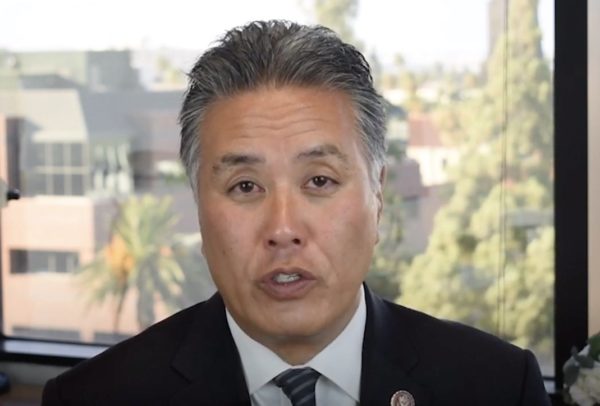
Rep. Mark Takano (screen grab of Takano online statement on Trump impeachment)
“We, as members of the California delegation, are fighting against members of the Trump administration but we’re really aghast at the idea that within California, which should be using all of its muscle to ensure that discrimination does not occur in healthcare,” Takano told the Los Angeles Blade. “The way they push back on this is they’re saying they need to reach more people of color and low-income people.”
Takano also noted that the LGBTQ community in Riverside County and all over low income areas – Latinos and African Americans, in particular — don’t have access to HIV counseling and healthcare services.
“This is still one of the most significant healthcare challenges – the continued spread of HIV among low income people and people of color” who may not have access to or may not have even heard about PrEP, Takano said. “And this cannot be solved by entering into discriminatory contracts that will inhibit the ability to reach out to these populations. So, I reject the notion that they’re going to reach more low-income people and people of color who need healthcare.”
Takano challenged UC Health to come up with alternatives. “We should not be stuck with providers who insist on discrimination,” he said.
“This really got brought to the Regents’ attention because UC San Francisco was trying to get into a four- hospital agreement with Dignity Healthcare. But we blocked them,” UC Board of Regents Chair John A. Perez told the Los Angeles Blade. “It was clearly the pattern of discrimination against LGBT folks, in particular transgender folks, but also the limitations on reproductive healthcare.”

UC Board of Regents Chair John A. Perez, California Assembly Speaker Emeritus (Photo via Regents)
The issue is personal for Perez. “I have a friend who went into emergency labor and was refused a medically necessary tubal ligation, which put her in very dangerous circumstances,” said Perez, an issue he addressed in open session. “If you got an emergency room open to obstetrics and somebody comes in, in emergency labor, for you to put these constraints that are not based on science or medical best practice is fundamentally at odds with our obligation and our standards and our values as a public university hospital system.”
Perez, who notes that he is one of three out LGBTQ Regents, is adamantly opposed to Option 1.
“I will do everything in my power to make sure Option 1 is never adopted,” Perez said. “I believe that running a hospital or a health system and making decisions based on anything other than science — the medical best interest of the patient — is tantamount to the corporate practice of medicine, which California expressly prohibited by law.”
Perez notes that the “thorny issue” raised by Option 1 has not yet been put forward. Meanwhile UC Health is focused on fighting the COVID-19 crisis. He disputes the notion of temporarily disregarding state and UC non-discrimination laws and core values to expand healthcare to low income people of color.
“We’re serving not only our patients, but we’re providing broader assistance to folks in other communities that aren’t part of our hospitals,” Perez said. “So, for example, Imperial County is about the most significantly impacted County in the state and we’re taking patients from Imperial County — not only in San Diego and Irvine, but as far away as Davis. We’re right now focused on direct patient care and direct research and helping turn the corner on COVID. And I think that really does speak to why nobody within the health operations has put this forward at this point.”
More comments and the congressional letter:
“University of California clinicians should not have their hands tied from providing reproductive and LGBTQ inclusive care because of religious directives,” said Rep. Lee. “While it is critically important to expand care to underserved communities, it should be comprehensive, not restricted care that is provided.”
“It is imperative that all Californians have access to quality and affordable healthcare, regardless of their gender or sexual orientation,” said Rep. Brownley. “The personal belief of healthcare providers should not be used to provide substandard care to classes of individuals. The University of California needs to make sure its actions do not narrow or restrict necessary healthcare, particularly for women and LGBTQ+ individuals, who have long faced roadblocks to getting the full healthcare they need and have a right to.”
“The University of California should not be limiting access to healthcare for LGBTQ+ people, women or other marginalized people who already face tremendous barriers to treatment —but proposing to do so during a public health crisis is particularly offensive,” said Equality California Executive Director Rick Chavez Zbur. “The UC is toeing a dangerous line by entertaining affiliations with hospitals that have long records of refusing LGBTQ+ inclusive and reproductive care. As Californians, we must — as we always have — set the example that everyone deserves care, regardless of religious belief, sexual orientation, the color of your skin or your gender identity.”
“California is a national leader when it comes to safeguarding and expanding reproductive freedom and LGBTQ-inclusive care — which makes affiliations between the University of California and hospitals like Dignity Health, that categorically refuse to provide basic reproductive and gender-affirming care, all the more troubling,” said Shannon Hovis, Director of NARAL Pro-Choice California. “Discriminatory restrictions imposed by Catholic health systems are an affront to California values, plain and simple. As the fourth-largest healthcare provider in the state, the UC has a public and moral responsibility to provide high-quality, evidence-based care, free from discrimination. With so much at stake for reproductive freedom and equality in 2020, we demand that the UC Regents take action to ensure that every body is able to access the care they need.”
[pdf-embedder url=”https://www.losangelesblade.com/content/files/2020/08/20.08.05.-Congressional-Letter-to-UC-Regents-on-UC-Healthcare-and-Dignity-1.pdf” title=”20.08.05.-Congressional-Letter-to-UC-Regents-on-UC-Healthcare-and-Dignity”]
Commentary
Trump’s triple X testosterone crusade to capture the Western Hemisphere
Veteran journalist and LGBTQ+ ally Lucian Truscott IV analyzes Trump and the Venezuela invasion
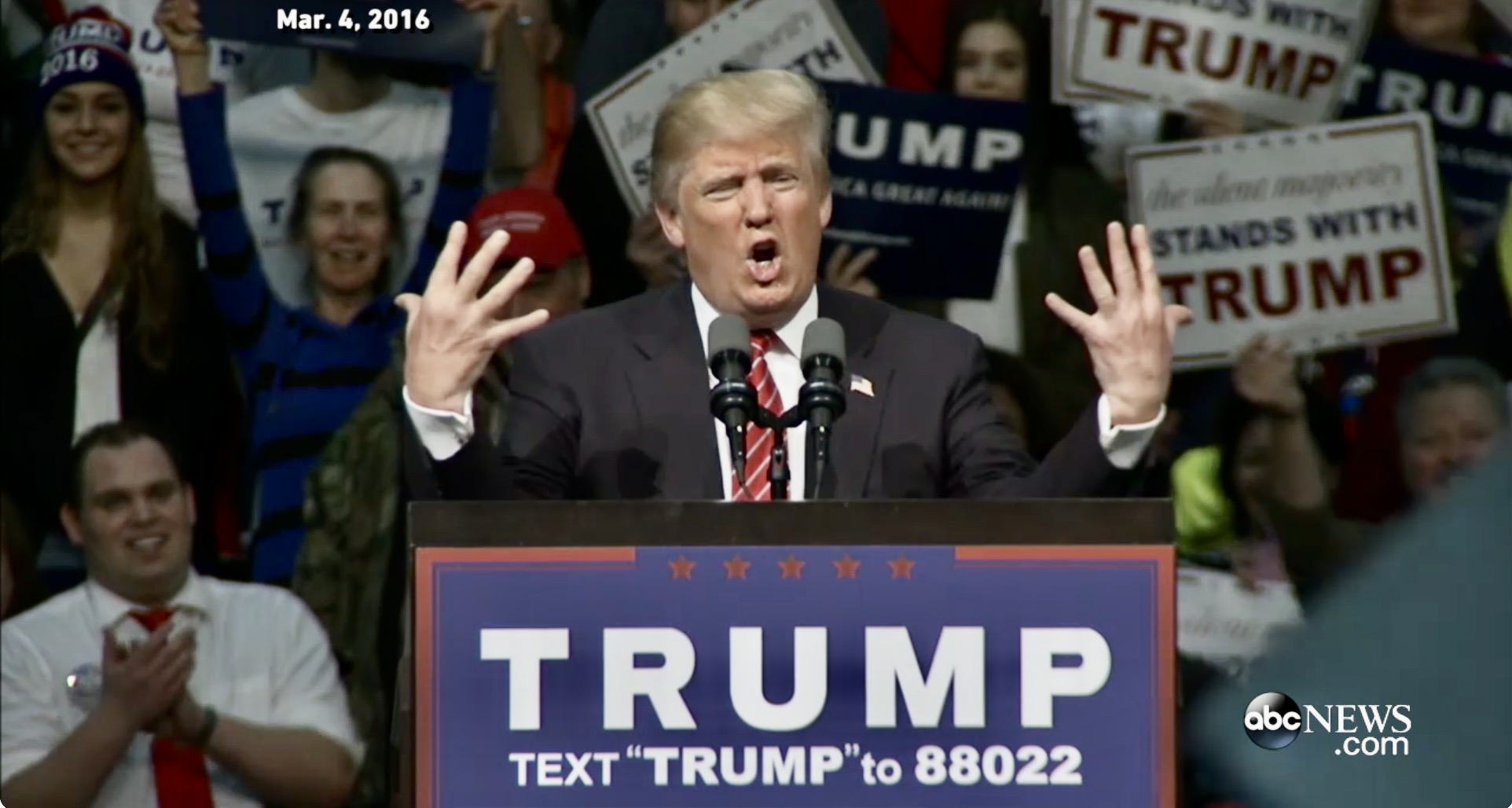
No one’s talking about Donald Trump’s small hands now or his low poll numbers or affordability failures or the 5.2 million unreleased Epstein files or the testimony of former Trump Special Counsel Jack Smith on the 5th anniversary of the Jan. 6 insurrection – not after the U.S. unleashed a surprise shock and awe bombing campaign in Venezuela on Friday night, Jan. 2. With great military precision, the United States successfully kidnapped Venezuelan President Nicolás Maduro and his wife Cilia Flores without the loss of any American lives.
Apparently, the 80 people who were killed – including civilians, Cuban nationals, and some Venezuelan military –are insignificant collateral damage.
A moment after the decapitation of leadership settled in, some Venezuelans celebrated the end of Maduro’s brutal reign of power. But Trump swiftly snatched away joy, announcing that “we are going to run the country,” along with Maduro’s former vice president, who was threatened into accepting the interim presidency to stabilize the transition to whatever Trump wants next in this sovereign country and to facilitate oil transactions. There is some confusion about the loyalty of the rest of the intact Maduro regime and the reaction from opposition activists.
What does that mean for someone like Andry José Hernández Romero, the gay stylist who fled Venezuela after being persecuted for his sexual orientation and open opposition to Maduro? Though he complied with all requirements to seek asylum in the US, he was arrested and, without due process, was deported with 250 other Venezuelans to the horrendous torture prison CECOT in El Salvador, where he suffered daily assaults and abuses.
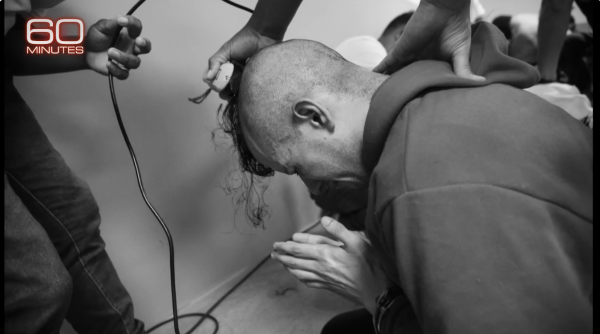
“We were lied to by ICE officials and then greeted in CECOT with beatings,” said Romero after he was sent home. “At every step of the way, they abused us. But being Venezuelan is not a crime. I’m grateful to Congressman Takano who has called for justice for the 252 Venezuelan men sent to CECOT without the opportunity to present their case in immigration court.” Questions about how and why so many amoral violations of due process took place are still on hold.
Trump’s second term is all about toxic performance masculinity, and following up bellicose bluster with actual brute force. Secretary of Defense Pete Hegseth’s Pentagon has murdered more than 100 people aboard alleged drug smuggling boats blown up by drones as if in a video game. The UN calls the killings “extrajudicial executions” since the US has produced no evidence or allowed due process to contest the claims that the boats were hauling fentanyl for distribution in the United States.
Oddly, the Pentagon has not released video of the blowing up of two survivors of a strike, clinging to a piece of wood for 45 minutes before they, too, were blown up Sept. 2 by a plane they apparently thought might rescue them.
It’s all about the drugs, say Trump acolytes, as if that balances out the inhumanity. Attorney General Pam Bondi provided a new 25-page indictment charging Maduro with heading a transnational narco-terrorist organization along with his wife and son. Secretary of State Marco Rubio, who has been pushing for regime change in Venezuela, described the attack as a “law enforcement” operation, without the need for Congressional advice and consent.
But the US indictment against Maduro cites cocaine, not fentanyl, which is “almost entirely produced in Mexico using chemicals from China,” according to U.S. authorities. “Venezuela plays no known role in its trade, nor does any other South American country,” the New York Times reports.
Venezuela is a pass-through country for cocaine. Meanwhile, in 2022, the U.S. attorney’s office for the Southern District of New York charged ex-Honduran President Juan Orlando Hernández with “one of the largest and most violent drug-trafficking conspiracies in the world,” responsible for the “unfathomable destruction” cocaine had caused in the United States.
Hernández was abruptly pardoned by Trump last month. “The man that I pardoned was, if you could equate it to us, he was treated like the Biden administration treated a man named Trump,” Trump told The Times, adding, “This was a man who was persecuted very unfairly. He was the head of the country.”
Trump seems addicted to unabashed lying. The Washington Post Fact Checker team found that Trump’s false or misleading claims totaled 30,573 over his first four years in office, “averaging about 21 erroneous claims a day.” On July 07, 2025, Yale experts released their findings on Trump’s claims or assertions. “Artificial intelligence discredited all the Trump claims we presented, fact-checking the president with startling accuracy and objective rigor,” they reported.
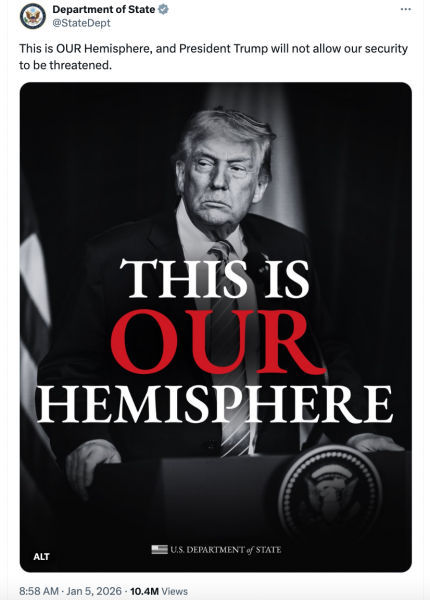
Trump demands that loyalists buy into his lies and bellicosity – including the latest, claiming Western Hemisphere domination. Rubio is salivating over destroying Cuba, as giddy as when he dreamed of besting his GOP rival in 2016.
“He is taller than me, he’s like 6’ 2”, which is why I don’t understand why his hands are the size of someone who is 5’ 2”,’ Rubio joked. “Have you seen his hands? And you know what they say about men with small hands – You can’t trust them,” ABC News reported.
Trump flipped the script on this manhood vulnerability, convincing the crowd they weren’t seeing what they were seeing. “Are they small hands? And he referred to my hands — if they are small, something else must be small. I guarantee you there is no problem. I guarantee you.” (Fact check: porn star Stormy Daniels says Trump’s penis is like “a toadstool.”)
Remember those small hands when Trump talks about going into a sovereign country to get oil, or Deputy Chief of Staff Stephen Miller talks about annexing the Danish territory of Greenland. There’s a smirky sexual overcompensation infused with the presumption of power.
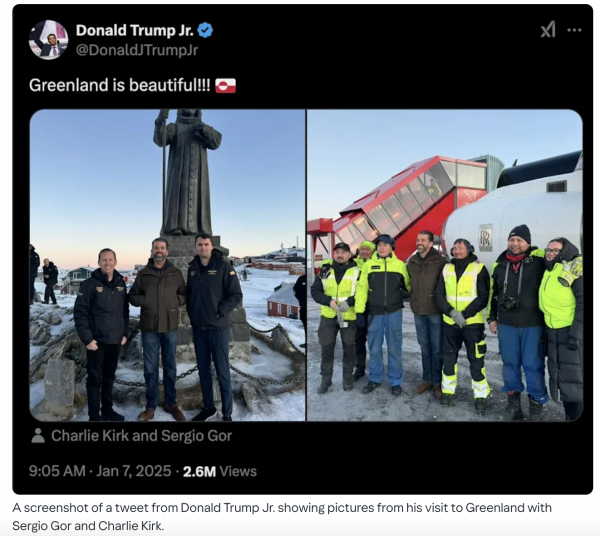
“We live in a world in which you can talk all you want about international niceties and everything else, but we live in a world, in the real world, Jake, that is governed by strength, that is governed by force, that is governed by power,” Miller told CNN’s Jake Tapper on Monday. “These are the iron laws of the world since the beginning of time.”
Sounds like Trump’s reply to E. Jean Carroll’s out lawyer Roberta Kaplan during his 2023 deposition.
From CNN transcript:
KAPLAN: And you say – and again this has become very famous – in this video, “I just start kissing them. It’s like a magnet. Just kiss. I don’t even wait. And when you’re a star, they let you do it. You can do anything. Grab them by the p*ssy. You can do anything.” That’s what you said. Correct?
TRUMP: Well, historically, that’s true with stars.
KAPLAN: It’s true with stars that they can grab women by the p*ssy?
TRUMP: Well, that’s what, if you look over the last million years I guess that’s been largely true. Not always, but largely true. Unfortunately or fortunately.
KAPLAN: And you consider yourself to be a star?
TRUMP: I think you can say that. Yeah.”
Grabbing Venezuela’s oil or Greenland’s potential wealth of critical minerals is the rape of someone else’s land. As Trump’s testosterone-related lawsuits suggest, he’ll need a lot of money and backup to get away with it.
I called my friend Tom Carpenter, an attorney and Marine Corps Captain and Naval Academy graduate who chaired Servicemembers Legal Defense Network, for his thoughts on what’s happening – might there be a draft to cover all the invasions Trump’s threatened? Tom said he’s following his friend – West Point Academy graduate Lucian K. Truscott IV – a straight man in the alum’s gay Knight’s Out association – whose Substack is erudite, illuminating, and funny.
Case in point: “Boy, are the think tank and media foreign policy poohbahs stumped after Trump’s big kidnapping of Mr. and Mrs. Maduro on Friday night. All of them agree that it was a brilliant military operation, which Secretary of State Marco Rubio insists on calling a law enforcement ‘mission in support of the Department of Justice.’ Which I guess isn’t that far-fetched a description, given the fact that we have platoons of armed, uniformed men in full combat gear running around our own country conducting Gestapo-like law enforcement missions on unsuspecting people, immigrant and citizen alike, as they go about their business of living peaceful lives in the United States of America.”

In Trump’s plan for Venezuela: A hope, a prayer, and golf, Lucian also noted in a White House photo that a waiter stood behind Trump, Rubio, and CIA Director John Ratcliffe in a makeshift ballroom/sit-room watching the assault. “Trump couldn’t inform Congress, but if you were a Mar-a-Lago waiter on Friday night, you knew everything that was happening in Venezuela in real time.”
Lucian comes from a long line of Army heroes: his father was an Army colonel who served in Korea and Vietnam; his grandfather, Lucian Jr., was a U.S. Army general during World War II, commanding the 3rd Infantry Division and later the Fifth Army in Italy. Lucian attended West Point, graduating in 1969, but not before causing some “good trouble,” which we discuss in our Zoom conversation.

A journalist and author, one of his books, Dress Gray, is about the murder of a gay cadet. In 1986, it was adapted for the screen by Gore Vidal and made into a TV miniseries that aired on NBC March 9–10,1986.
Lucian is also a descendant of American Founding Father Thomas Jefferson and created some controversy by inviting the descendants of Jefferson’s enslaved mistress, Sally Hemings, to a 2000 family reunion.
But among LGBTQ+ historians, Lucian is perhaps best known as the first eyewitness reporter, along with gay columnist Howard Smith, his colleague at the Village Voice, to cover the riots at the Stonewall Inn, published July 3, 1969.
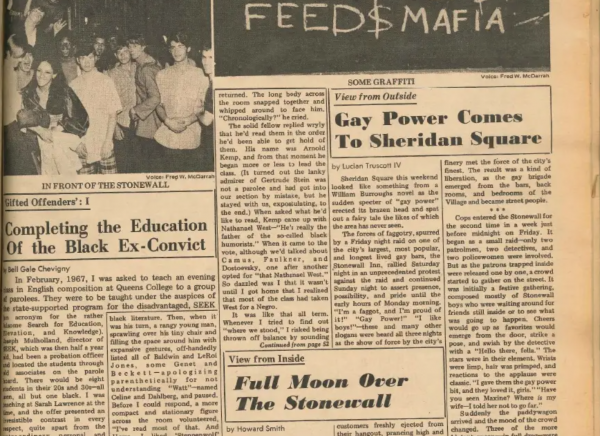
“Sheridan Square this weekend looked like something from a William Burroughs novel as the sudden specter of ‘gay power’ erected its brazen head and spat out a fairy tale the likes of which the area has never seen,” Lucian wrote, opening a very detailed account, laced with words like “faggot” and “dyke,” commonly used language at the time. Lucian later wrote that a protest led by Jim Fouratt over the slurs prompted Lucian and the Village Voice to change their language.
Importantly, Lucian writes with specificity about that night on June 28, 1969 – including: “The next person to come out was a dyke, and she put up a struggle — from car to door to car again. It was at that moment that the scene became explosive. Limp wrists were forgotten. Beer cans and bottles were heaved at the windows, and a rain of coins descended on the cops.”
Two nights later, Lucian hangs out with famed gay Beat poet Allen Ginsberg. “Gay power! Isn’t that great!” Allen said. “We’re one of the largest minorities in the country — 10 percent, you know. It’s about time we did something to assert ourselves.”

Lucian accompanied Ginsberg into the Stonewall Inn, which was blaring with rock music, and later walked him home. “Along the way, he described how things used to be. ‘You know, the guys there were so beautiful — they’ve lost that wounded look that fags all had 10 years ago.’ It was the first time I had heard that crowd described as beautiful.
“We reached Cooper Square, and as Ginsberg turned to head toward home, he waved and yelled, ‘Defend the fairies!’ and bounced on across the square. He enjoyed the prospect of ‘gay power’ and is probably working on a manifesto for the movement right now. Watch out. The liberation is underway,” Lucian wrote.
In our Zoom conversation, we talked about Trump, Venezuela, how Trump’s ludicrous dreams of imperialism could defeat him, Sen. Mark Kelly, a possible draft, and so much more. I also asked Lucian why he is an LGBTQ+ ally.
“That’s the kind of thing I learned from my parents and from my mother, from my grandmother – was you disarm people with humanity. That’s what you do. If you’re a human being, act like one,” Lucian K. Truscott IV said. “And if you act like one, eventually, once you brush things and clean crap off your feet like Donald Trump – you win… So I guess my message is: it’s not going to be easy – but this, too, will pass. It will.”
It’s our job to hasten the passage.
This is a cross-post from Karen’s LGBTQ+ Freedom Fighters Substack. Please enjoy the video conversion with Lucian K. Truscott IV on the site and check out his daily Substack.
Commentary
Repeal now, regret later: Section 230 is up for elimination, and it’s not the platforms who will pay the price
As lawmakers seek to repeal Section 230, one must ask, what does this mean for adult content creators, their consumers, and the platforms that bridge the two?

Sliding in at the tail end of 2025, Congress introduced two not-so-beautiful bills that could potentially refine the internet as we know it. The House’s Sunset to Reform Section 230 Act (HR 6747) diagnoses Section 230 with 12 months or less, culling it to the afterlife on December 31 of 2026. The Senate’s companion bill, S 3546, would repeal it two years following its enactment, leaving lawmakers with this allotted amount of time to… figure something out.
For those just arriving, Section 230 is the law that allows for social networks, forums, and more to host user content with slim fear of lawsuits. To rid the internet of Section 230 is to kick its legs out from underneath it. While these lawmakers are selling this as a push for “accountability,” it will, in reality, be to the detriment of millions of adult content creators.
There is a not-so-subtle dramatic flair to Washington’s most recent idea for fixing the internet. Take one of the most foundational laws that allows it to function, and roll it back harder than my eyes are as I write this. No frou-frou amendments or considerate recalibrations necessary, just a set-in-stone expiration date to pull the plug on Section 230, leaving us to pick up the tab.
This is essentially what the proposed repeal of Section 230 of the Communications Decency Act reflects. Bills in both the House and Senate would strip Section 230 from the books in just a few years, leaving Congress and the public to figure out what is next before time runs out. Those who support it call it leverage, while others criticize it for its recklessness. However, for the countless folks whose livelihoods are tethered to their online presence, especially those in adult entertainment, it feels more like involuntarily absorbing the consequences of a political clash. Unconsidered collateral damage, even.
Since its inception, Section 230 has been seen by many as the green light of the internet, which is only a slight exaggeration. While it doesn’t protect speech itself, it does protect platforms from being seen as the legally responsible publisher of every word, image, or video posted by those who use it. Without it, the logic of the internet folds in on itself. Twitter (or X or whatever tf we’re calling it these days) would be liable for your incel-ly cousin Chad’s QAnon quips.
But beyond the blurred lines on free speech and innovation is a more bitter truth. Repealing Section 230 in no way, shape, or form primarily falls on Big Tech. It punishes the people who depend on their platforms to work, survive, and build communities – specifically, those who already find themselves cast to the margins. And, let’s be real, nowhere is that more evident than in the adult entertainment industry.
Proponents of repeal insist this is about accountability, but accountability here is just an illusion. Some argue that tech companies have skirted by on a free pass for way too long. If platforms were made liable for their users’ content, they just might begin to take damaging or offensive material seriously. This particular framing positions lawmakers as disciplinarians quelling an unruly industry fueling disorder.
The issue here is that accountability doesn’t magically manifest itself when you threaten mass liability. What does appertain is fear. When our beloved platforms fall vulnerable to the prospect of being taken to court over the content it willfully distributes, they don’t evolve into mindful moderators. Instead, inspired by panic, they drastically elevate their censorship.
This is not new. When SESTA/FOSTA carved out exceptions to Section 230 in the name of combating sex trafficking, platforms responded not with nuanced enforcement but with scorched-earth moderation. Craigslist shut down its personals section. Tumblr excommunicated adult content. Innumerable sex workers lost their income and their livelihood overnight. This was not because what they were doing was illegal, but because they were now seen as too risky – or too risque – to host. The repeal of Section 230 as a whole would take this dynamic and amplify it fivefold.
When platforms are in panic-mode, it’s those putting in the work who pay the price. Adult entertainers are far from possessing the lobbying teams and defense funds to do much about it. We’re freelancers, independent contractors, and small business owners. We rely on subscription sites, fan communities, and social media as our infrastructure.
If Section 230 peaces out, these platforms have the decision of aggressive over-moderation or calling it quits. Adult content will undoubtedly be the first to go due to its quite specific brand of stigma. Through the legal-risk lens, banning adult content entirely is more cost-efficient than bringing on and paying for additional moderators and lawyers. This results in the decimation of primary income streams for many.
It has happened before and could happen again – accounts being deleted with zero warning; years of accruing a fanbase disappearing with the update to the terms of service. Performers already live with the reality of banks refusing service and social platforms shadowbanning – and sometimes straight-up deleting – accounts. Repealing Section 230 will only compound these.
The irony of it all is that, if Section 230 is repealed, the internet will likely just become that much more dangerous, not the opposite. It is when mainstream platforms shun adult content that the content subsequently shifts over to more obscure and less regulated sites, which offer much fewer protections and even less accountability. It’s these sites that are not as concerned with data breaches, harassment, and so on. Think for a beat on Prohibition or pre-legalized marijuana. What these lawmakers are selling as morality-induced detox (or purge, rather) only leads to an underground economy that is much more at risk.
Section 230, as it is now, also allows for platforms to moderate free of the role of “publisher.” What does this mean exactly? They have the ability to block accounts and enforce community standards while counteracting digital forms of abuse. The void of this autonomy would inevitably be filled with increased and unchecked harassment and stalking, with reduced means of intervening.
And let’s be honest – when such reigns are pulled in, they do not do so evenly or fairly. Time and time again proves that it’s the marginalized communities who are the first to feel the sting (rest easy, Brazzers and Corbin Fisher). The Trans and BIPOC folks will be those caught in the first wave and many more to come.
Like any monopoly, big companies with swelling legal teams will manage just fine and usher in the new Post-Section 230 age. Smaller performer-driven platforms and sites? Well, thoughts and prayers, babes. Result: less autonomy and less coin for the performers. If the true initiative here is to check Big Tech, this is a mighty-sus way of going about doing just that.
Now, Section 230 is far from perfect. But when it comes to platforms, accountability is key. The internet is rife with trolls and worse. At the same time, although not nearly as immediate, real reform would be much more precise and much less dramatic – not to mention, less damaging.
And it’s not solely the creators who will be affected, but also their consumers (I see you). For consumers of online adult entertainment, get comfortable with a more expensive and, well, blander experience. When platforms are hit with liability, the easiest avenue they tend to choose is not to add moderation but to offer less. What would remain would be sterile, simpler, and much more controlled.
Consumers would also feel the hit in their Apple Wallet. It would be foolish to believe that corporations would absorb the legal risk. No, sir, this will be passed on to you. Fees would increase, and features would become more restrictive. In the end, we would be left with an internet under the control of a select few. Sound at all familiar?
If or when Section 230 is repealed, it would restructure who gets to work, who gets paid, and how much, and who absorbs the risk. For those in adult entertainment, income, safety, and autonomy are on the chopping block. If the goal here is to hold corporations accountable, then – and just a thought here – perhaps do not sacrifice those most vulnerable in the process. That is just bullying at its most refined.
Viewpoint
From closeted kid to LGBTQ+ journalist: queer community is my guiding light
Ponderings about my first months at the Blade and the stories shaping my reporting.

In the first week of September, I boarded an early Coast Starlight, crying quietly over a cold bagel as the train departed. It was a 12-hour trip from Emeryville to Los Angeles: plenty of time, I thought, to steep in my sadness as I left the home I had made for the last several years to start a new one in a bright, shiny city. I sat in silence, watching the sun press itself into the sea off the Santa Barbara coast, water and night parting me further and further away from my friends and community.
When I arrived at Union Station, I stood at the platform and was surprised by how warm it was at 9 p.m. A giant skyscraper towered into the sky, glaring down at me with its golden glow and millions of windows. Welcome home.
Since then, I’ve made a truce with the city. I’d always been in its orbit, having grown up in a small, suburban town northeast of it most of my life. But trips into L.A. proper were reserved for special occasions: birthday dinners in Little Tokyo at our favorite restaurant, the now-defunct Sushi Komasa. I had never ventured into the region’s vast queer gems and safe havens: places that I’m sure would have provided me assurance that it was okay to have crushes on people who weren’t boys (or to not have crushes at all!).
As a computer kid, I subsisted on brief explorations on YouTube or clicking through various fanfiction forums. My queerness existed in the gay kiss scene of Cruel Intentions, reigniting with each press of the “play” button and shelved away when the tab closed. I operated like this for years, burying my desires and performing diligent, dependable elder child during the day.
Today, I’m a community reporter at a proudly LGBTQ+ news outlet, where I get to spend most days with other queer folks, listening to their stories and trying to document their lives.
In the last few months, I’ve attended parties, press conferences, community gatherings and rallies that center the liberation of queer folks, specifically those who are multiply marginalized. I’ve spoken with strong leaders and advocates for the TGI movement, who fiercely advocate on a daily basis for greater protections for transgender, gender nonconforming, and intersex people.
One of my most joyous reporting moments at the Blade includes attending the Los Angeles LGBT Center’s annual Queerceañera: where beloved drag diva Lushious Massacr floated across a stage, embraced by the love of her community as she celebrated and reclaimed the coming-of-age ceremony. With queer joy and communal love, she transformed into a beautiful, cascading butterfly on the precipice of flight.
I also attended a transformative HIV/AIDS art exhibition curated by Anuradha Vikram, where a small gallery morphed into a living archive of revolutionary activism spearheaded during the HIV/AIDS epidemic of the 1980s. The intersections of history and art, and the unity amongst various queer people during this period, were truly inspiring to witness. Speaking with Vikram was instrumental in my early days at the Blade, and our conversation made me think critically about the ways queer activism has shifted dramatically in the decades since the HIV/AIDS epidemic.
How are young, queer people channeling their activism today? This is a question that continues to power my work as I report on our communities.
Another valuable and crucial experience I had while working at the Blade was on World AIDS Day, where I covered a reading by the APLA Health writers group. Dozens of us stood by the pillars of West Hollywood’s AIDS monument and listened to the beautiful, moving prose of several writers who all had personal ties to the HIV/AIDS crisis of the 80s. I still think about John Boucher’s gorgeously crafted, heart-wrenching story.
“I remember Rex coming through our front door after a trip, coming home from work, or at 2:30 in the morning after the bars had closed and he’d finished singing karaoke. As the black lacquer door opened into the goldfish-colored room, he’d sing: ‘Hello apartment,’ Boucher read. “He was greeting our life. His tenor voice was clear and true, his eyes the color of cornflower blue against the pinkish orange sunset of our living room. This is home.”
These stories, rendered through the heartfelt voices of the people around me, remind me of the importance of this work. I struggled with my identity for most of my adolescence and early adulthood, and only began to really accept and understand myself around four years ago, when I began to develop blossoming friendships with queer people who were unabashed about their art, their euphoria, their juicy crushes. Their visibility and their joy, which became our shared visibility and joy, guide me in my most difficult moments.
This year, I suffered the tremendous loss of a dear friend who was a blazing, warm light for her community. She was a poet and artist who was outspoken in her activism and in her bold self-expression. She rejected shame with every fiber of her effervescent being and advocated for the protection of fellow trans women, disabled people, and queer people of color. Her loss is one I will carry with me forever, and anchors me in my work.
My work is for Mercedez, my queer AAPI siblings, queer youth, queer immigrants, queer disabled people, and everyone else who exists on our vast spectrum.
LGBTQ+ Youth Mental Health
Law expanding mental health resources for LGBTQ+ youth has gone under effect
Beginning Jan. 1, AB 727 amplifies resources for queer students in California.
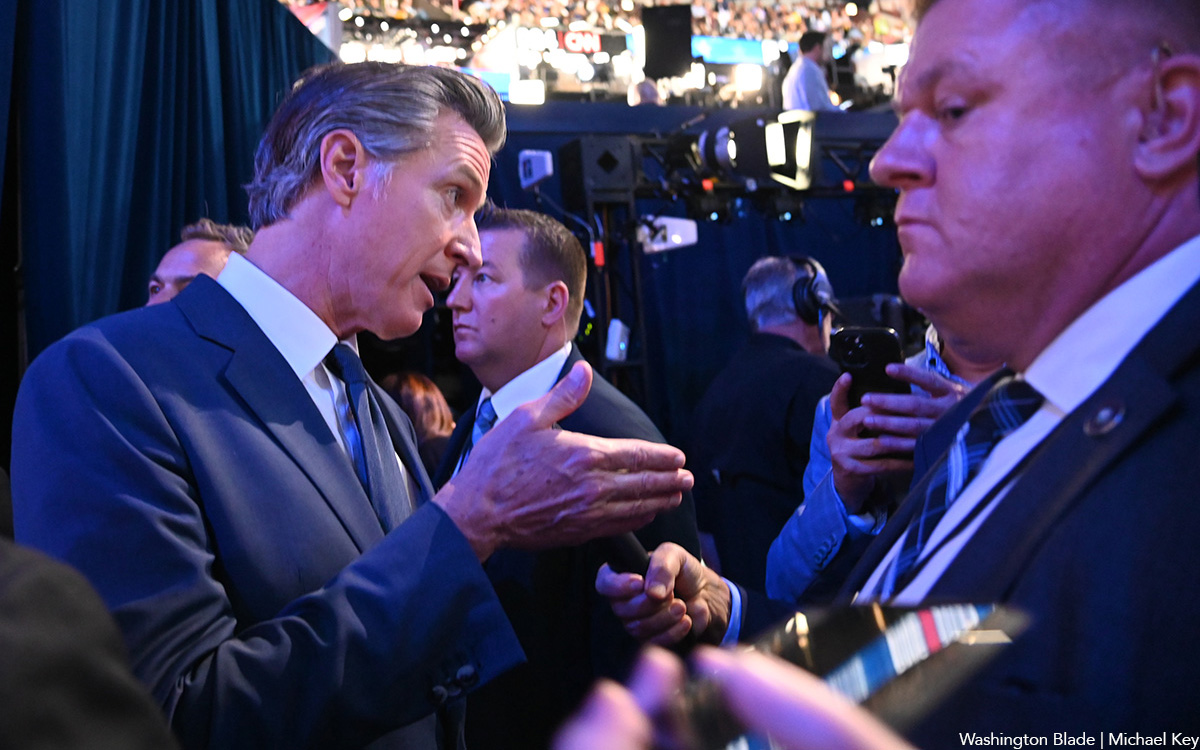
On Wednesday, Governor Newsom announced in a press release that a number of key statewide laws would take effect on New Year’s Day. One of these laws is AB 727, a bill that mandates that all student ID cards in California’s public middle schools, high schools, and colleges include the number for the LGBTQ+ suicide prevention nonprofit The Trevor Project’s 24/7 crisis hotline.
Authored by local Assemblymember Mark González, the bill is especially crucial as President Trump steers administrative efforts that seek to end various LGBTQ+ resources. In 2025, the national 988 Suicide and Crisis Lifeline discontinued its “Press 3 option,” which connected young queer people to a specialized counseling line.
Hate crimes targeting transgender, gender nonconforming, and other queer folks are on the rise in California. Amongst LGBTQ+ youth, mental health concerns are increasing. The Trevor Project found in a recent study that suicidal ideation amongst young LGBTQ+ people living in the U.S. rose from 41% to 47% in the last two years.
In December, the administration began advancing proposals that would ban gender-affirming care for minors, as well as restrict insurance coverage around these essential services. News updates like these have become frequent and incessant, creating an echo chamber that more and more young queer folks are struggling to escape from.
AB 727 is trying to remind them that they are not alone. “Every student deserves to feel safe, supported, and seen for who they are,” wrote Governor Newsom in October, when he first signed the bill. “AB 727 makes it clear: your identity doesn’t disqualify you from care and community – it’s exactly why we are fighting to make it easier to reach.”
The bill is one of a number of statewide and local efforts to ensure young queer people are able to readily access empowering resources, education, and someone who is eager to listen to and support them. For many queer folks, this small act can be life-altering, even life-saving. Other initiatives include a motion by Los Angeles Supervisors Lindsey Horvath and Janice Hahn that proposes a localized version of the “Press 3 option.”
“We’re sending a clear message,” wrote Assemblymember González, after AB 727’s initial signing in October. “[That] our LGBTQ+ youth are seen, valued, and never alone. AB 727 is not just a piece of legislation; it is a lifeline for our queer youth.”
Kristie Song is a California Local News Fellow placed with the Los Angeles Blade. The California Local News Fellowship is a state-funded initiative to support and strengthen local news reporting. Learn more about it at fellowships.journalism.berkeley.edu/cafellows.
Commentary
New Year, New Queer: A polite reminder of the traditions that many of us make and many of us break that are well worth revisiting this particular year
As 2026 approaches, an opportunity to reassess how we would like to navigate the next 365 days (and then some) is upon us yet again. Here are just a few resolutions that are worth giving another shot
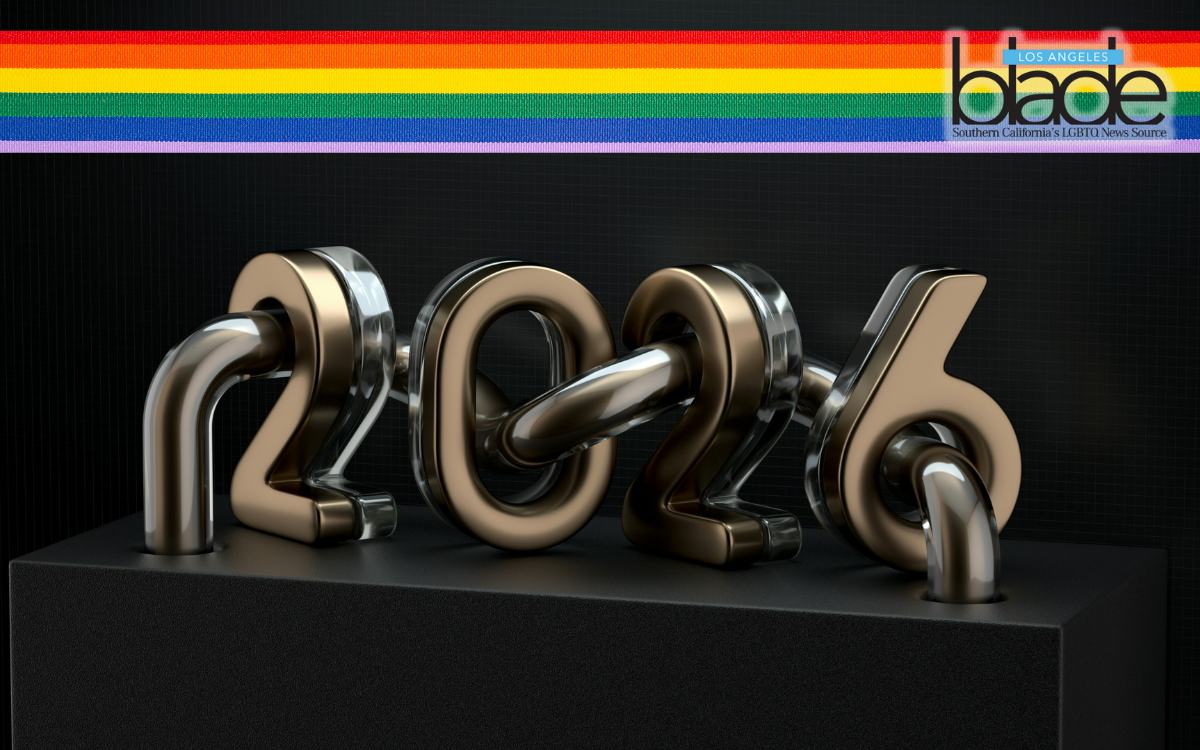
Every January, queer folk across the land proclaim, whether in a whisper for their own ears or in declaration to anyone who will listen, that this is their year. The year that they finally stretch more. The year that they stop DM-ing exes who live two boroughs away and “aren’t emotionally available.” The year that they become politically involved, spiritually engaged, mentally focused members of society with a keen comprehension of themselves and those in their orbit. And yet, two months deep into 20-whichever this one is, we return to doomscrolling, disdain for work, and validating all forms of procrastination to anything that might actually matter to us.
New Year’s resolutions are a uniquely queer genre of fiction. We make them with genuine hope yet toss them in the bin overnight. But maybe we don’t need to chalk it up to failure. Perhaps we can reframe it as… practice. There might be an ounce of truth in that the resolutions we tend to abandon are the ones that we need to put our back energy into.
It’s been a minute since I’ve had the opportunity to compile such a list as the one I’m about to present you with, but my publisher proposed it, and I bit. What can I say, I’m a sucker for self-improvement. Anyhow, without further ado and in no particular order (up until the last two), here’s a list of a few resolutions that I’d like us all to reconsider. Whether you resonate with one or more or none at all, I can only hope that reading even half of this article will allow you some space for whatever introspection you need to discover what resolutions work for you.
ONE: Slow down
Almost every queer and non-queer alike state at some point that they’d like to be more present. Everyone also has screen time counts that would make the baby Jesus cry. We make a promise to ourselves to live more in the moment, then twenty-four hours later, we’re swiping through social media faster than an incel goes through tissues.
Take a breath. Take three. Go for a walk without your phone. Or (I hope you’re sitting for this) leave it at home for an afternoon or (gasp) a day. A little dopamine detox does wonders for the nervous system. Instead of funneling all your energy into memes and man-candy, turn inward occasionally. We spend hours at the gym to look good in a harness. Maybe, just maybe, exercise your mind too. Self-awareness increases emotional intelligence, and emotional intelligence is sexy. We break this resolution because distraction is easy. We often take it back up because clarity feels that much better.
TWO: Let’s get spiritual
Before you metaphorically throw something at me, hear me out. When I use the term “spirituality,” I don’t mean for you to start going to mass every Sunday and praying the rosary (which, for many of us, mirrors familiar practices put upon us in our youth that have led us to the less-than-savory coping mechanisms that we are desperate to break as adults). Spirituality can simply mean five minutes of meditation once a day. Sitting, breathing, focusing on nothing in particular, and performing nothing productive, which can be groundbreaking in and of itself.
You’ll be terrible at it at first. Or, at least, that is how you’ll feel about it. But that’s the point! Research consistently shows that even brief daily meditation reduces stress, improves focus, and increases emotional regulation (which we all could benefit from, especially following 2025). Result? fewer spirals, clearer mindset, better sex. Most of us tend to call it quits on this resolution because stillness is uncomfortable. Find comfort in the uncomfortable.
THREE: Take inventory on the people in your life
Take inventory of those you share your time and energy with. Too many of us have those folks in our lives who hold us back, dim our light, or keep us stagnant. Take inventory. Who supports you? Who shows up when things are hard, not fun and simple? Identify and value your ride-or-dies, and cherish them. They’re priceless.
Cutting the dead weight doesn’t make you a dick; it makes you honest. Keep in mind, just because a relationship ends doesn’t mean it has no value. So many relationships are chapters, not the novel. Others are just footnotes, and even those hold worth. We carry the lessons forward and let the rest go. So many of us are afraid of being lonely, but having fewer people of high value in your life far outweighs dividing your energy amongst too many, where it goes wasted.
FOUR: Evict the judgmental bitch in your brain
You know it far too well. The voice that tells you you’re too much, not enough, failing. The voice that is constantly comparing yourself to everyone else around you. Spoiler alert: Everybody else is doing themselves the same injustice. That voice is not intuition; it’s a whole collective of internalized bullshit. Self-judgment is bedmates with anxiety and depression. Self-compassion is cozied up with resilience and motivation. Bluntly, being a dick to yourself in a world full of dicks doesn’t make you better; it exhausts you.
Put that voice in check. Talk back at it and challenge it. Then give it a long-overdue eviction notice. F*ck squatters’ rights. The race can feel so long, and in the end, it is only with yourself. Give yourself the permission to stop and take in the scenery.
FIVE: Identify and fortify your values
Many people love to throw around the term “values-driven,” when the more accurate translation would be vibes-driven, infused with quasi-political and self-affirming language. And listen, vibes are cute and cozy and should be acknowledged, but let’s not confuse the two. Values are what stay when the vibe tides turn, when the room gets all awkward and uncomfortable, and – most importantly – when standing up for something costs you comfort and familiarity.
Take a beat and ask yourself: what would I like to fuel in the short time I have on this rock? Not what sounds good in a cover letter or gets the most follows, but what principles assist you in navigating your everyday decisions. How do those values show up in how you spend your money, your time, and your energy? Who do you tolerate? Who do you choose to protect? When do you speak up and – a lot of us need to hear this one – when do you close your lips and listen?
Values are like muscles. When one doesn’t use them, they atrophy. And when one doesn’t examine them, convenience and comfort happily come in and serve as a placeholder. It’s easier to float than to anchor. Align yourself with integrity. It can be relieving.
SEVEN: Dare yourself to get more politically active (I couldn’t help myself but to follow up with this one after mentioning values…)
Get more politically involved. Sh*t is crazy, and it’s not letting up any time soon. I have heard far too many people, both queer and not-so-queer, say that they’d rather tune out the news, sparing their mental health. You know what is a far more powerful mental health aid? Getting and being proactive. I’m talking about getting up and out into your community and getting involved. Don’t like what you’re seeing in the news? Do something about it. Brunch doesn’t need to be a weekly activity, and season two of Heated Rivalry isn’t out for a hot minute.
Volunteer. Show up to the community-run mutual aid meeting even if you don’t know anyone and feel some type of awkwardness. Email your congressperson. Sign a petition. STAY INFORMED. Staying informed and active builds agency, and agency is grounding as f*ck. Many folks find comfort in turning a blind eye to things. But let’s be real, the “ignorance is bliss” trope is tired, and complacency is inexcusable. Let’s leave all that in 2025, shall we?
Many of us will make these and similar resolutions again this year and inevitably break them once again. But maybe the point isn’t perfection but persistence. The act of recommitting, whether it’s to ourselves, to each other, or to humanity, is itself an effed-up form of queer tradition. I’ll toast to that.
As our beloved Cornbread said in Sinners, “Let’s get back to doing what we ought to be doing… being kind to one another.” Rest in power, king. Love you, Coogler. Happy 2026, everybody.
Commentary
Looking back on ’25. Looking forward to ’26.
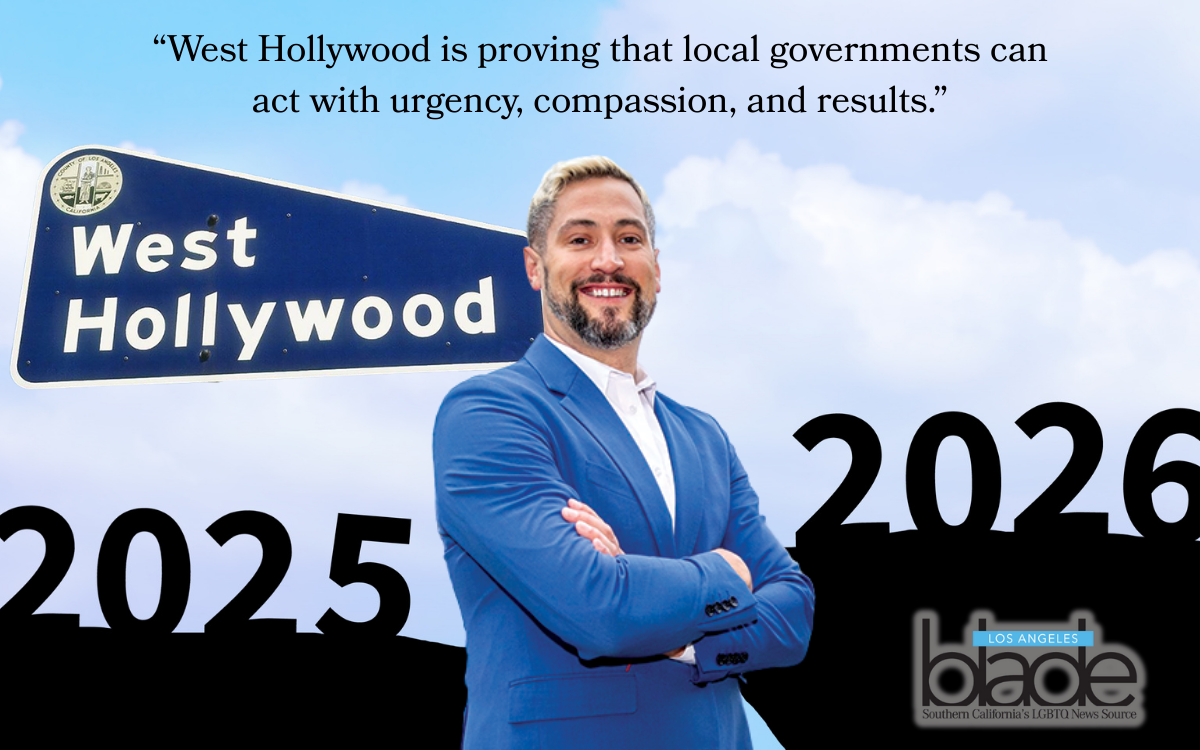
By Councilmember John Erickson
In 2025, the headlines throughout California told a similar and unsettling story: rising rents and housing element battles, visible encampments, fentanyl overdoses, retail theft, traffic deaths, and climate change. These are not isolated crises. They are interconnected challenges that demand regional collaboration and local leadership acting with urgency, courage, and pragmatism. In West Hollywood, we are confronting these crises head-on.
Housing remains the central fault line. Throughout 2025, cities across California, including West Hollywood, continued to grapple with housing element solutions, fueled by misinformation and resistance, even as rents continued to climb, forcing more people into welfare and homelessness. The reality is simple: without more housing at all income levels, every other socio-economic problem worsens. West Hollywood has responded by streamlining approvals, advancing infill and mixed-use projects, and prioritizing affordable and supportive housing near transit and jobs. This is about keeping working people, seniors, and young families from being pushed out and about meeting our responsibility to help solve a statewide shortage.
Public safety concerns intensified last year, particularly around retail theft, drug activity, and quality-of-life issues in commercial corridors. In West Hollywood, we have adopted a balanced approach that residents consistently request: a visible law enforcement presence combined with prevention, accountability, and mental health response. We strengthened coordination with the Sheriff’s Department while expanding community-based strategies that address the root causes of crime. Public safety is not about choosing between compassion and enforcement; it is about doing both well.
Homelessness and the fentanyl crisis have been impossible to ignore. In 2025, overdoses and encampments underscored what local leaders already know: doing nothing is not compassionate, and cycling people through the system does not work. West Hollywood is focused on providing care, not criminalization. By working closely with social service providers, public health agencies, and public safety partners, we are conducting coordinated outreach, connecting people to treatment, and moving individuals from the street into permanent supportive housing. Housing with services saves lives and improves safety for everyone.
Tenant protections are another line of defense against displacement. As inflation and rent pressures squeezed renters last year, West Hollywood reaffirmed its leadership in rent stabilization and tenant rights. Protecting tenants is not anti-growth; it is how we preserve the diversity and stability that make cities livable in the first place.
Climate threats and traffic safety also dominated 2025. Extreme heat days, wildfire smoke, and dangerous streets are no longer abstract concerns; they are daily realities. West Hollywood is investing in resilient infrastructure and safer roads to reduce traffic deaths, protect pedestrians and cyclists, and cut emissions. Safer streets are climate policy, public safety policy, and quality-of-life policy all at once.
The challenges facing California’s cities in 2026 demand more than patchwork solutions. They demand leadership that understands cities are on the front lines. West Hollywood is proving that local governments can act with urgency, compassion, and results. Now Sacramento must meet cities at that same level by funding housing and homelessness solutions, modernizing infrastructure, and trusting local innovation.
When cities lead, and the state follows as a trusted, collaborative partner, California works better for everyone.
John Erickson is a Councilmember and Former Mayor of the City of West Hollywood and a candidate for California State Senate District 24.
Commentary
Finding myself in the West Hollywood nightlife scene
Spoiler alert: the real treasure was the friendships we made along the way.

From a young age, I didn’t think I was cut out for West Hollywood. And that was before I even visited the place.
As a brown gay boy from the very edges of Los Angeles County, I mainly learned about West Hollywood from the media. I heard about a place filled with all the queerness I could possibly imagine, with my younger self not having the words for why hearing about a city where men got to love each other openly made me want to sob. This concept filled me with hope, but the image of West Hollywood — and being a gay man in general — seemed unattainable to me.
When I looked up gay people online and caught glimpses of them on TV, I saw men diametrically opposed to anything I could ever be. I saw people with 2% body fat, rife with finances I could only pray for and backgrounds the complete opposite of mine (namely, Caucasian). This, combined with the nuanced grief of being a young, feminine boy from a Mexican family, left me feeling that this city, only 24 miles away, would always be out of my reach.
These feelings of loss grew into bitterness, as age and a continued inability to actually visit West Hollywood (I waited way too long to learn to drive) turned my queer envy into internalized homophobia. I eased my self-inflicted hurt by telling myself that I never even wanted to be around such openly gay guys. Luckily, this mentality was erased as years of college showed me the beauty of finding a queer community, with each semester seeing a growing yearning to visit the place I’d always dreamed of in my youth. Unfortunately, Covid-19 postponed this trek even longer, but after graduation and a summer away, I finally returned home ready to visit the gay mecca that is West Hollywood.
Only to find all my fears come to life.
Well, okay, not all of my fears; I was lucky that the right V-neck shirt and skinny jeans combo earned me some of the attention my awkward college self always yearned for. And while I never faced outright vitriol, aside from the occasional too-drunk demon twink (I can say this as a reformed demon twink), I still never felt the ease I’d always dreamt of.
I navigated these clubs and packed sidewalks on edge. Traversing the street between Rocco’s and Micky’s had me constantly wondering what was wrong with me, why I didn’t look as effortlessly stylish as the other clubbers, or didn’t have the jaw-dropping muscle mass of the go-go boys onstage. I’d been taught that West Hollywood, and by extension true queerness, was only accessible with the effortless confidence and impeccable appearance of those I saw in the media — and I didn’t have that. So for years, I spent weekends in WeHo lamenting that this place where everyone was supposedly welcome didn’t seem to have room for people like me.
And then, I had a realization. One of my constant anxieties was the fact that I didn’t have a large group of gay males to go out with; every weekend, I saw countless packs of perfectly coiffed men roving the streets searching for the next club. Most of my long-lasting friends are queer women and non-men, and often I would go to West Hollywood with a gaggle of girls trying to dance the night away. Each time, I would always see a group of guys out of the corner of my eye and feel deeply, deeply inadequate. I’d ignore the outpouring of love from those around me and reiterate to myself that I’d once again failed at fitting into the vision of “WeHo Gay” I’d always seen as mandatory. It wasn’t until one day, when I was at a video game event with one of my best friends (an utterly badass bisexual woman), leaning over her shoulder as she completely demolished Ryu, that I had a revolutionary thought: I’m happy.
It didn’t matter that I was navigating this city in a way unlike what mainstream culture told me was the norm of WeHo. In that moment, I realized that if the core of West Hollywood is true queerness, then that means this city must be welcoming to people of all identities. That it couldn’t only be accessible to those who fit a singular Hollywood-set image of gay. I looked back on my nights out and realized that in being so nervous about not ‘fitting in,’ I was ignoring the rampant joy of being with those I felt closest to. People who experienced this city ‘correctly’ by focusing on nothing more than being their queerest, most authentic selves.
With this realization came an overwhelmingly new experience of West Hollywood. As I focused not on how I didn’t fit into some self-reinforced image but rather how much fun I was having with friends, I began to feel like those men I’d always seen on TV. Not in appearance or social standing, but in the prideful confidence I’d been chasing for the first two decades of my life. And as cliché as it is, it was when I stopped seeking acceptance that I began to receive it! With this recognition came new connections, new contacts, new parties where I could spend hours dancing without caring about how I looked to everyone around me. As I walked (and, occasionally, stumbled) along those rainbow flag-lined streets with my found family, I finally realized what West Hollywood meant to me: a celebration of queerness, in all of its countless forms. And, exuding this newfound awareness, the city I’d always dreamt of finally brought me into its concrete-clad embrace.
This is how I found myself in West Hollywood. Not in dances with strangers or tips in gogo boy g-strings — though those definitely didn’t hurt. I found myself in West Hollywood through the people I spent my nights with there; by looking around and realizing that the WeHo nightlife scene, something that I once associated with nothing but envy and inadequacy, was a space where I could truly be myself. It gave me the confidence I’m still nurturing, and it taught me what it really means to be my gayest, proudest self in LA today.
COMMENTARY
The hazards of hating ‘Heated Rivalry’
With public opinion of the LGBTQ community under fire, a show about closeted hockey players and their budding romance has galvanized audiences.

Whether you have heard about the salacious sex scenes, the hype, or the attractive leads, Heated Rivalry has clearly found its place in the zeitgeist. Whether you’ve seen it, love it, hate it, or have strong opinions knowing nothing about it, this show has become a hot topic for the LGBTQ community.
With public opinion of the LGBTQ community under fire, a show about closeted hockey players and their budding romance has galvanized audiences. Based on one of the Game Changers books by Rachel Ried, this series has launched countless memes, TikTok think pieces, and the stars appearing everywhere from Vanity Fair to Hi Tops bar in West Hollywood.
Some of the hot takes include taking issue with the source material being penned by a woman, speculation over the sexual orientation of the stars, and, as actor Jordan Firstman would have us question, is the sex unrealistic? The I Love LA star started beef with his HBO Max coworkers by dragging the show. However, some social media content has quickly squashed the beef. That’s the power of Heated Rivalry.
The question is, why the hate? The fundamental issue is that we end up popping our own balloon. This show and the dialogue surrounding it reveal many blind spots of the gay/queer male community. Drunk on the multiple iterations of Will & Grace and Queer as Folk, we can assume there is an inexhaustible pool of queer content that can break out into the mainstream. We also hold it to impossible standards: not gay enough, too gay, too much sex, not enough.
Heated Rivalry is a love story of two hockey players whose eponymous Heated Rivalry turns to sexual tension, to sex, then maybe…romance? Word of mouth has led to appointment viewing like other signature shows on HBO.
One beef is that people take issue with the fact that it’s focused on athletes. Why this story? Why venerate masculinity? And yet, don’t gay men still venerate masculine and even straight men? There are still gay for pay pornstars, pressure to have the body of an athlete, and an outdated sexual fixation on performative masculinity.
Why not explore the last bastion of homophobia: professional athletics? If someone of Travis Kelsey’s level of fame could come out, wouldn’t that help people stop focusing on queer issues as a reason for the ills of society and maybe look at the real issues?
It’s not surprising, given our political climate, that both Boots and Heated Rivalry would come out around this time. Both explore homophobia and queer men in heteronormative spaces. Major league athletes are still less likely to come out, while the repeal of Don’t Ask, Don’t Tell has made it easier for queer men to be in the military. They represent widespread appeal to straight communities. After all, where else can a straight man cry and scream than about his favorite sports stars?
Another problematic thing is speculating about the actors’ sexualities. Whether they are queer or not, they are representing our community fairly well. My personal theory is
Connor Storrie is a gifted actor somewhere under the LGBTQ umbrella, and Hudson Williams is a soft heterosexual bottom. Both represent a queer experience.
What matters more is their performances. Storrie learned Russian for the role and has a Meryl Streep-level transformation from an LA actor/model to a Russian athlete with an awe-inspiring caboose. Williams captures so much nuance and holds it down for masculine bottoms.
Finally, who cares if the source material was written by a woman? As queer men, especially gay men, we may rarely interact with women, but we can afford to learn the benefits of integrating emotional and social intelligence, which women are more allowed to cultivate socially.
Ironically, the female fanbase driving up viewership and rhetoric around the show is doing more allyship than a million bachelorette parties at gay bars.
Fundamentally, Heated Rivarly is giving queer men something to gab about and invite discourse in the same way that Drag Race became the Super Bowl of hyperfemininity and helped queers connect and converse. Heated Rivalry offers a tender romance amid the toxic masculinity, intimacy issues, and competition of toxic masculinity.
My personal theory for all the hostility and hot takes about Heated Rivalry is that it centers on yearning. One thing women get permission to do is have a healthy relationship with longing. With queer men, it’s often one-sided and creates this dark addiction to yearning for someone who doesn’t want us. This turns into codependent crushes on your best friend or a hyperfixation on turning a friend with benefits into a partner, all while ignoring the people who want us.
Longing is a slow-building, uncomfortable emotion that explores the range from happiness to sadness. You can try to fuck it away or explain it to bits but for a community inoculated against feelings by the patriarchy, bullies when we were younger and drunk on the power of polyamory and Dan Savage’s countless anti-monogamy talking points, the idea that two men can meet, have a slow budding relationship, build a rapport, develop intimacy slowly over time, and fundamentally realize they want to be together is not the norm. This could be aspirational and may be why the universe inspired a woman to write it, a gay man to develop it into a series, and two actors of indeterminate sexual attractions to play the sex scenes and the emotional angst so we could take a hard look at how we see male love.
COMMENTARY
Why Rob Reiner’s murder hit this old lesbian hippie so hard
Addiction kills. Journalist Karen Ocamb dives into mental health and addiction themes to explore coping with Rob Reiner’s murder.
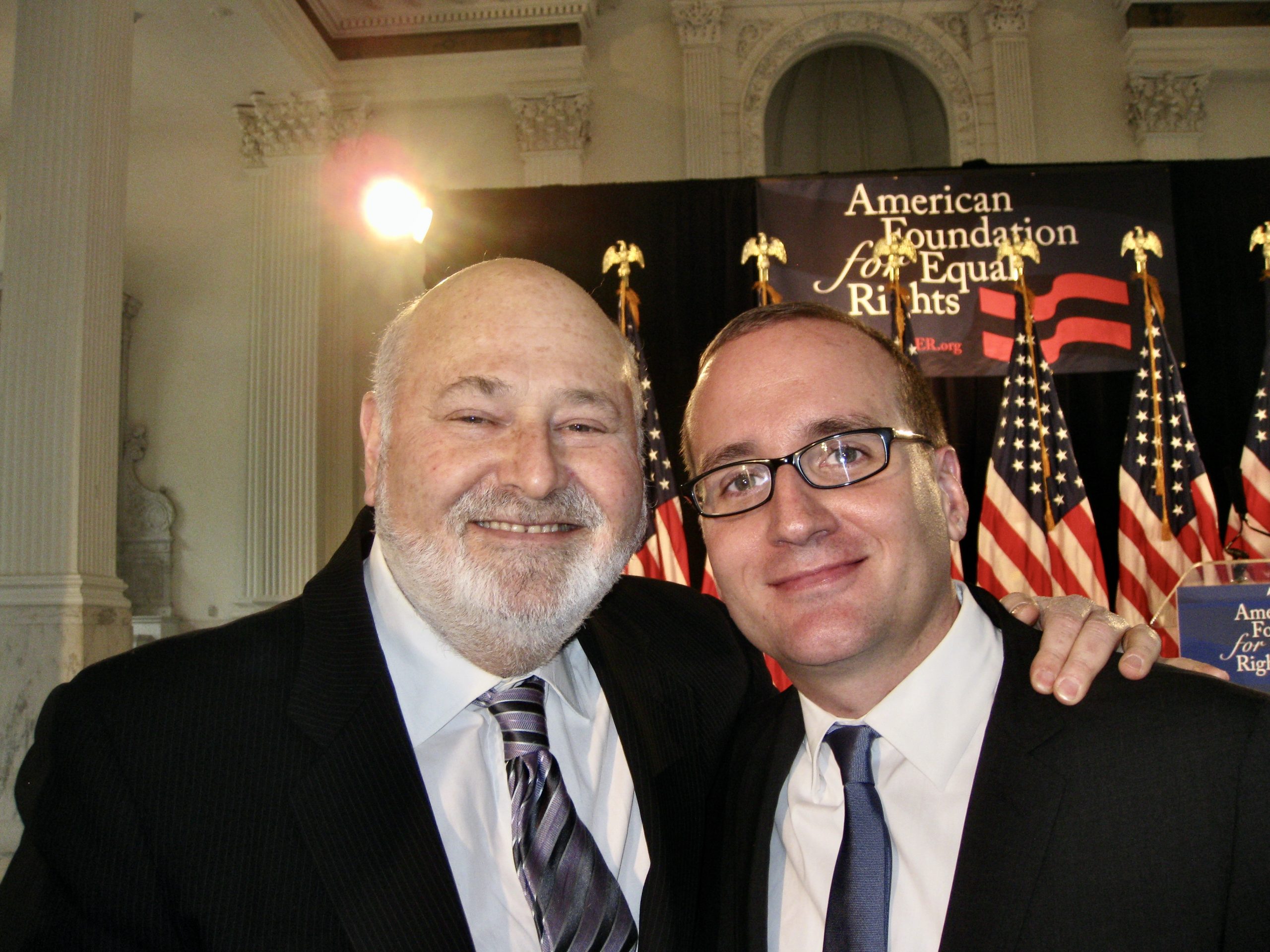
Rob Reiner was an anomaly in Hollywood: the unabashedly Democratic liberal “good guy” who honestly wanted to dialogue and passionately debate issues such as marriage equality with Republican conservatives as a way of advancing democracy and seeking a more perfect union.
“I’ve always said, ‘You cannot have a healthy democracy unless you have a healthy Republican Party and a healthy Democratic Party so that we can actually debate the ideas of where we are,’” Reiner told Republican political commentator Margaret Hoover, host of PBS’s Firing Line With Margaret Hoover, in a tribute rebroadcast of a show recorded April 2019. “I mean, we are a…capitalist nation, but we also have a lot of socialist programs inside the capitalist nation, and we have to find a way to balance those things. And the only way to do that is to have two parties arguing with a common set of facts.”
Reiner talked about how he befriended many Republicans after Republican legal icon Ted Olson shared his deep belief that marriage is an individual freedom and therefore a fundamental right for lesbian and gay individuals. He reminded Hoover, a longtime LGBTQ+ ally, that they first met at the federal district court in San Francisco for the hearing over California’s anti-gay Prop 8. She excitedly reminded him that they sat together.
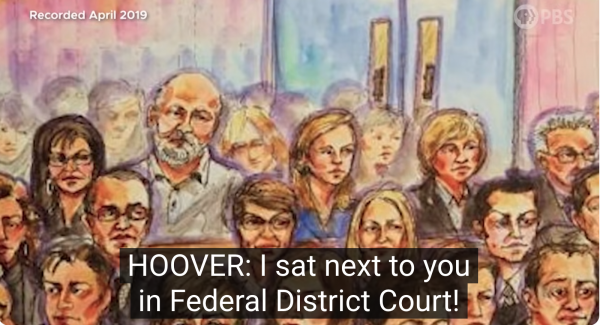
Hoover actually served on the Advisory Council for the American Foundation for Equal Rights (AFER), the organization Reiner created with longtime gay friend and fellow progressive advocate Chad Griffin and Griffin’s business partner Kristina Schake. The idea for the federal challenge to Prop 8, which passed with 52 percent of the vote in 2008, started formulating soon thereafter during a lunch with the three and Michele Reiner at the Polo Lounge in the Beverly Hills Hotel. Later, an acquaintance suggested they contact Ted Olson, who supported marriage equality. Reiner shared his excitement when Democratic stalwart David Boies, Olson’s opponent in the infamous 2000 Bush v Gore case, joined the federal case, effectively taking politics out of the argument. (Read New York Times investigative reporter Jo Becker’s book Forcing the Spring: Inside the Fight for Marriage Equality for an engrossing behind-the-scenes look.)
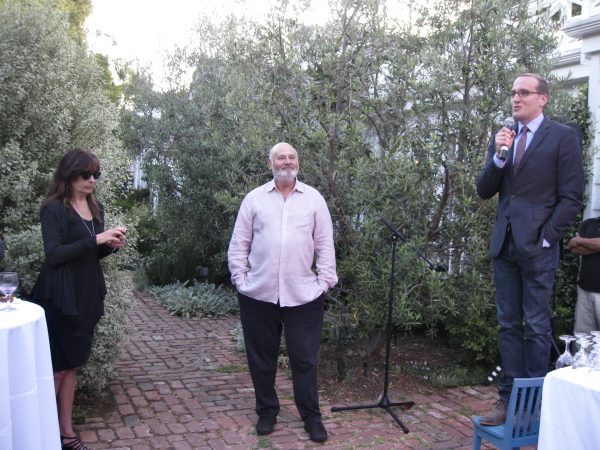
Watching Hoover and Reiner spar, laugh, and exchange stories is a horrific reminder of what we’ve lost. Who else could head up a Truth and Reconciliation Commission after Donald Trump and his acolytes have left the scene?
The sudden brutal stabbings of Rob Reiner and his beloved wife Michele in the bedroom of their Brentwood home in the early morning hours of Sunday, Dec. 14, allegedly at the hands of their drug addicted, mentally ill son Nick, hit many of us personally. Through his acting, writing, and incredible films, or through his work on progressive issues, we felt we knew Rob Reiner. And our hearts break for their immediate and extended family.
“Words cannot even begin to describe the unimaginable pain we are experiencing every moment of the day,” Romy Reiner, 27, and Jake Reiner, 34, said in a statement Wednesday. “The horrific and devastating loss of our parents, Rob and Michele Reiner, is something that no one should ever experience. They weren’t just our parents; they were our best friends.”
The siblings requested respect. “We are grateful for the outpouring of condolences, kindness, and support we have received not only from family and friends but people from all walks of life. We now ask for respect and privacy, for speculation to be tempered with compassion and humanity, and for our parents to be remembered for the incredible lives they lived and the love they gave.”
But their request was met with outrageous moral indecency from Trump and click-bait speculation by Megyn Kelly that Nick’s attorney might try the Menendez defense.
While these cruel antics have generally been met with disgust, other human beings are bearing their anguish over the murders and the alleged murderer in silence.
Those who experience mental health issues and their sphere of healthcare providers face heightened uninformed stigma after it was revealed that Nick had been diagnosed with schizophrenia several years ago and his medication had recently been adjusted or changed.
And many in 12 Step communities are bereft. We are excruciatingly familiar with alcoholic/drug addict arrogance, impulsiveness, and the compulsion to get what we need by any means necessary. “I want what I want when I want it – and I want it NOW!”
And this: “An alcoholic is someone who could be lying in a gutter and still look down on someone.”
And then there’s rage that’s so chemically exhilarating, you forget what you’re enraged about.
Whether hooked, self-medicating, or mixing street drugs with pharmaceuticals, there are some drugs that can take a brain hanging ten over a cliff of insanity and tip it over with a whisper or nudge. Some who have fallen don’t get back up. Others don’t want to.
What are loving parents to do?
LSD tipped me over; at the age of 20, I became a ward of the State of Connecticut after an almost successful suicide. The nurses put me in a bed previously occupied by a young woman who hoarded her sleeping pills and died there three days earlier. The staff asked me if I needed any pills to help me sleep.
The absurdity was clarifying. I stayed in that Norwalk Hospital psyche ward for months – my parents were too afraid, too ashamed to visit, and left me to “experts” who visited for 10 minutes and lots of Nurse Ratched wanna-bes. I learned what I had to do to avoid shock “therapy” – smile, nod, lie, and not judge my fellow inmates.
When I finally got out, I gave up LSD and, having dropped out of college, I studied philosophy at Fairfield University. My brain kept pressing existential questions as if they were immediate and real. I took up the occult and hitchhiked to Alfred University in Upstate New York to study A.E. Russell, W.B. Yeats, and the Rosicrucians. I lived with a bunch of witches and warlocks with whom I drank beer and watched the original “Star Trek” broadcast from Canada – after which we smoked doobies and argued existential bullshit about each episode.
One guy in the house had dropped so much acid that he was stuck. He’d either wander around blank-eyed or jump on the furniture like a threatening chimp. I was glad I’d given up acid.
I didn’t get clean and sober until 1980 when my bosses at CBS News thought I’d make a good test project for their new Employee Assistance Program. The theory was: it’s easier and cheaper to sober up a good, screwed-up employee than to hire and train a new one. I balked. I had reasons. I had excuses. They didn’t understand. I’d stop on my own.
But I couldn’t stop, and they did understand. They gave me an ultimatum. Go to rehab or get fired. I thought of jobs where I could drink and use without hassle. But being a journalist had become my identity. Who would I be without that? Now that was an existential question.
I had two bad glasses of white wine and smoked a joint before I went to a rehab that June near the Amityville Horror House. But I’ve been clean and sober ever since.
It took me WAY LONGER to surrender my alcoholic arrogance, and even decades later in recovery, I still have bouts of depression, which I link to my dormant addiction. Today, I cherish life and my choices.
But with Rob and Michele Reiner’s murders, a rehab phrase has reappeared: “You know you’re getting better when you’re homicidal and not suicidal.”
I know this was intended metaphorically to help a suicide addict like me: first, a ludicrous smile; then accessing the long-oppressed anger, fear, and abandonment; then taking steps to get out of it. But recognizing that addiction kills is no laughing matter.
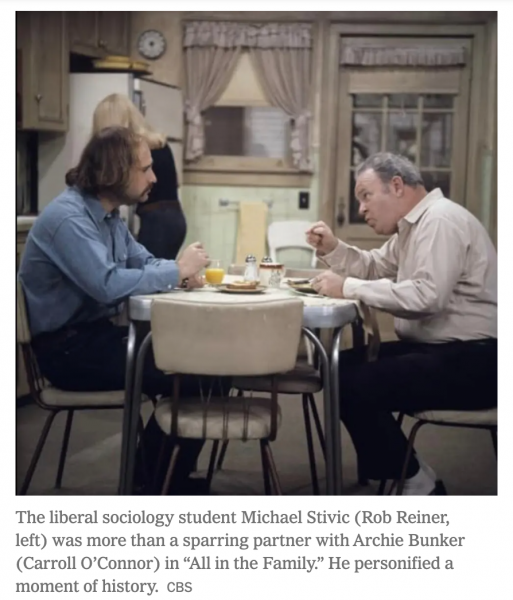
I do not know Nick Reiner. I met Rob Reiner through Chad Griffin and AFER. However, like so many others, I appreciated him “representing” hippies as caring progressives on “All in the Family.” He was similarly caring in real life, as evidenced by his humble, emotional reaction on Piers Morgan’s show, honoring Erika Kirk’s forgiveness of her husband Charlie Kirk’s assassin.
I do not know Nick’s story – I do not know the anguish of having schizophrenia and drug addiction. But I know in my heart his parents loved him to the moon and back. I suspect Romy and Jake and the Reiners’ friends are struggling not just with unimaginable grief but with how, in some way, to have compassion for this ill addict they loved who lived among them.
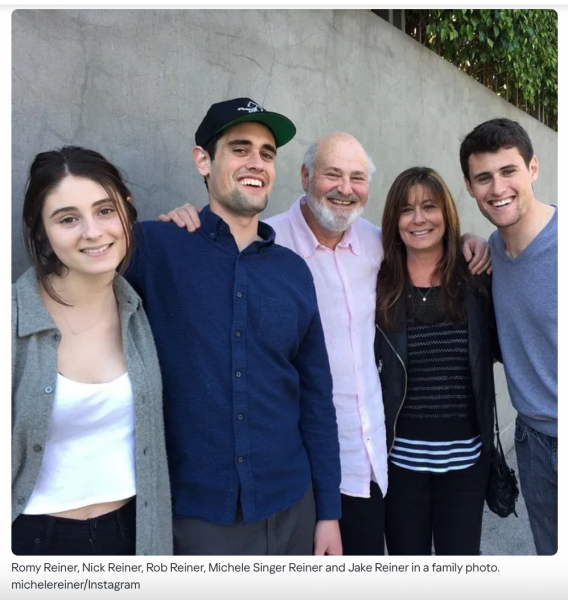
Perhaps this is an odd way to express gratitude to America’s greatest “good guy.” I hope by sharing my story, the spirits of Rob and Michele may realize they did everything they could – they did not fail their son. He, too, has individual freedom – including to make horrible wrong choices willingly, even those orchestrated by addiction. Or did mental illness combined with addiction strip him of that choice?
Forgiveness is not yet on the horizon. But perhaps a greater willingness for compassionate understanding can be.
And hopefully, by sharing these human frailties, those who are struggling will find the strength to defy stigma, fear, and addiction’s arrogance and reach out for help.
As for me, today, I humbly acknowledge: “There, but for the Grace of God, go I.”
SAMHSA’s National Helpline is a free, confidential, 24/7, 365-day-a-year treatment referral and information service (in English and Spanish) for individuals and families facing mental and/or substance use disorders.
This essay was updated from the original posted on Karen’s LGBTQ+ Freedom Fighters Substack.
Health
Choose U ambassadors share lived experiences with HIV, personal reflections, and insights
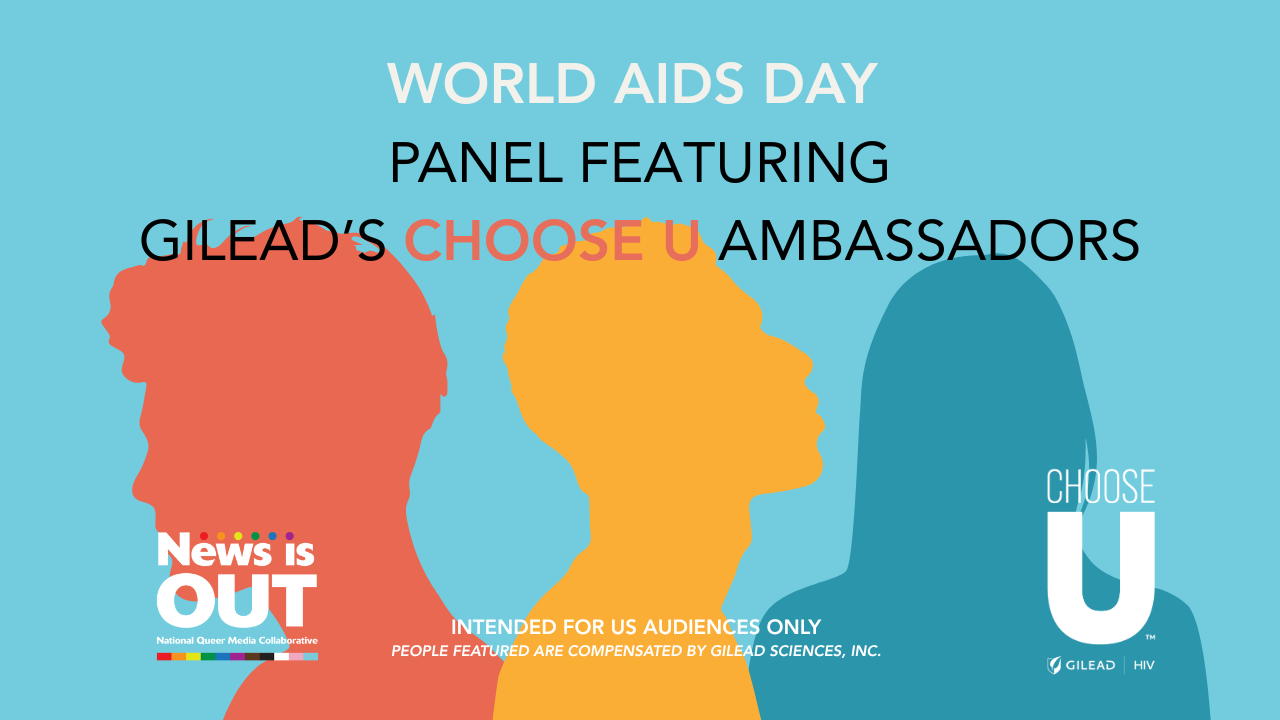
By Dana Piccoli
The Choose U World AIDS Day panel brought together three longtime advocates living with HIV to talk about care, stigma, and what living with HIV over the long-term means to them. The conversation featured Jahlove Serrano, Joyce Belton, and Andrew Nichols, who have each lived with HIV for more than 20 years. News is Out hosted the event in partnership with Gilead Sciences.
“Co-created with community representatives from around the world, Choose U is comprised of inspiring examples of how the outlook for aging with HIV has dramatically changed,” Gilead shared in the recent launch of the program. “By focusing on the real-world experiences of people in different circumstances, Choose U spotlights individuals prioritizing starting and staying on HIV treatment, self-care, and overall strategies to help them lead healthier lives.”
The Choose U ambassadors opened with a clear message: Lived experience drives understanding.
Each panelist talked through the decisions, relationships, and periods of uncertainty that shaped their HIV care. They also described their approaches to HIV treatment and adherence, including the importance of staying on treatment to help lower the risk of HIV drug resistance. They reflected on the shifts they have seen in HIV treatment over the decades, the value of honest conversations with providers, and how staying engaged in care and on HIV treatment helped them lead longer, healthier lives.
The panel discussed U=U, which stands for “Undetectable equals Untransmittable.” Undetectable means there is so little virus in the blood that a lab test can’t measure it. Research shows that taking HIV treatment as prescribed, and getting to and staying undetectable, prevents HIV from spreading through sex.
The panelists also spoke about the emotional side of living with HIV over the long-term and the stigma they have faced. Joyce described a personal moment when her pastor visited her in the hospital and how that experience began her work educating her church community about HIV.
Jahlove talked about how his biological family reacted to his diagnosis. “When I disclosed my status, they told me that I put a shame on the family,” said Jahlove. When he shared his status with his peers, they responded with support, which gave him a sense of empowerment.
Andrew, a professional therapist, described how he has experienced stigma in dating and in his workplace, and why he turns to therapy for guidance. “Therapy has really helped me rebuild my confidence and realize my self-worth has to come from me,” said Andrew. “Then after that, I can help with the greater community.”
The panel closed with a message for others living with HIV: They encouraged viewers to start and stay engaged in HIV treatment and care, ask questions, and rely on supportive networks. Their stories show how starting and staying on treatment over the long-term, community, and affirmation can shape well-being.
A recording of the full 30-minute event is now available on YouTube, which you can access here.
-

 Minnesota3 days ago
Minnesota3 days agoReports say woman killed by ICE was part of LGBTQ community
-

 Commentary3 days ago
Commentary3 days agoRepeal now, regret later: Section 230 is up for elimination, and it’s not the platforms who will pay the price
-
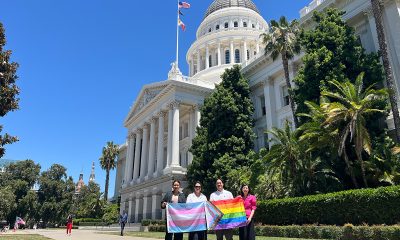
 Features4 days ago
Features4 days ago“We deserve to have a future here”: How we can support queer AAPI communities in 2026
-

 a&e features3 days ago
a&e features3 days ago‘The Golden Girls’ writer Stan Zimmerman reflects on 40th anniversary, coming out, and working with Roseanne Barr
-

 Events5 days ago
Events5 days agoGlowing tigers and butterflies will light up LA Pride’s first event this year at L.A. Zoo
-
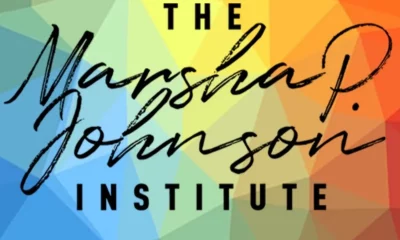
 LGBTQ Non-Profit Organizations4 days ago
LGBTQ Non-Profit Organizations4 days agoPassing the brick: How MPJI is centering Black and Brown trans voices
-

 Movies4 days ago
Movies4 days agoTig Notaro & Zack Snyder’s hot lesbian action film
-

 Colombia4 days ago
Colombia4 days agoGay Venezuelan man who fled to Colombia uncertain about homeland’s future
-

 Movies3 days ago
Movies3 days ago‘Hedda’ brings queer visibility to Golden Globes
-

 Events4 days ago
Events4 days agoLA Art Show, LA’s longest-running independent art fair, kicks off art season on January 7th
